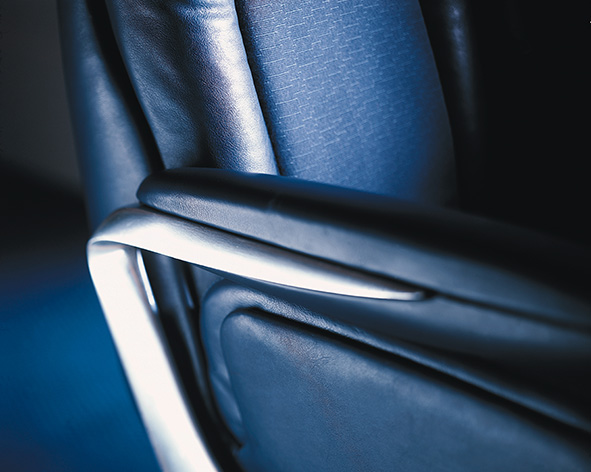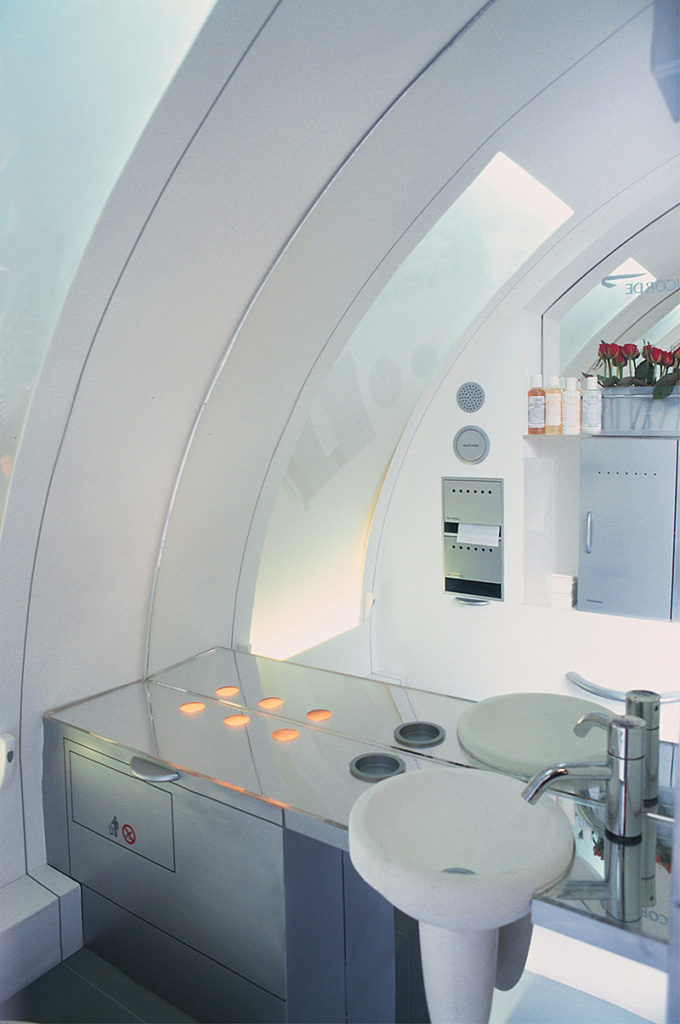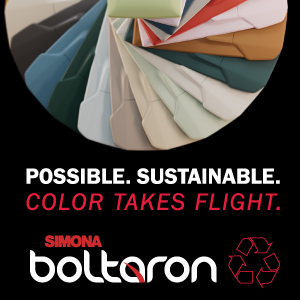This is a PR Story penned by Factorydesign. The opinions expressed here do not necessarily reflect the views of RGN.
As Aerospace Bristol museum opens – complete with the last Concorde to be built and the last to fly – Factorydesign recaps how it created such a game-changing cabin interior. Factory took an holistic approach, expanding the scope of the passenger experience beyond the cabin and into the terminal, and also developed the idea of branding as an integral part of the cabin design.
In 1998, the industrial design consultancy was less than a year old when it was commissioned to create what would be Concorde’s last manifestation: Concorde Alpha Foxtrot.
Factory’s job was to produce new designs for Concorde’s interior, and where possible to go beyond a simple replacement of the seat, fixtures and fittings – it was a brief that allowed them to examine changing everything. Through their designs, the concept of customer experience in the aviation sector was born.
Factory named it Project Rocket (BA’s affectionate nickname for the aircraft). They examined Concorde’s unique position in British Airways’ fleet, and the opportunities that the ‘cottage industry’ that surrounded this position presented. They quickly realised that as the world’s only commercial supersonic jet, Project Rocket would allow them to redefine Premium travel.
Meanwhile, Sir Terence Conran’s team was responsible for the soft side of the design work, as in colouring, fabric design cutlery and such like. The two agencies presented separately their vision for the concept design strategy and worked with the BA in-house team, Neal Stone and Paul Wylde, to align ‘soft’ and ‘hard’ elements.
Underlying all the opportunities was a clear message from BA design manager, Mike Crump: Concorde is selling time. For many of the more regular – and therefore valuable – customers, the principle justification for using it was the speed.
This message needed to be communicated, while at the same time the issue of weight needed to be addressed: the seat had a target weight reduction of 20 per cent.

Weight reduction remains a big focus for industry even today. Image: Factorydesign
In their analysis of other businesses with similar juggling acts of weight versus strength versus cost, Factory proposed that Formula One car makers used composite materials, carbon fibre and kevlar, that could fit the bill. Factory designed the whole seat bucket as a single piece – a cradle seat as a monocoque structure – saving separate parts and therefore the cost and weight of fixings to join them. Each part performed its task from an engineering perspective first, rather than as simply a ‘styling’ exercise. The seat philosophy was every part had to perform both its engineering requirement and an aesthetic one, as there was no room for cladding.
In terms of aesthetics, Factory created a design that had the feel of extreme comfort, more akin to a luxury car, with built-in adjustable features such as headrest and footrest to support this. The result was the seat looked at home in a boardroom or an Aston Martin, rather than a piece of commercial airline furniture.
One of the early ambitions for the interior was to define Concorde as a British Airways Concorde, something that could be achieved with elements such as colouring. Factory also made the new Speedmarque logo work as a 3D form, as the cast aluminium armrest support – a device which subtly reinforces the brand all along the aisle. A central armrest in the 2 – 2 configuration seat layout was made to turn through ninety degrees as it was raised, so as to slip between seat-backs without wasting space, another subtle innovation from Factorydesign.
The consultancy transformed the utilitarian toilets into bathrooms, bringing on board some of the refinement expected of a bathroom in a good hotel or restaurant. Their innovations included doing away with the standard paper towel dispenser and introducing a stack of neatly-folded, white flannel hand-towels; specifying fittings such as the tap from the best the domestic retail market had to offer; the using high-grade finishes and materials gave a premium feel in a tight space. The Bathroom featured an innovative blend of three different light types to provide both illumination and ambience.

Light played an important role in setting the ambience. Image: Factorydesign
Although Concorde’s two galleys were some of the smallest in the air, they managed to produce meals for some of the most demanding diners. Factory upgraded them from functional kitchen areas to ‘welcome zones’. This was part of the holistic thinking about the customer experience from home to destination.
Factory’s role went beyond the interiors to extending the Concorde experience for both regular and once-in-a-lifetime passengers. From Heathrow Terminal 4’s First Class/Concorde lounge, as passengers passed through the gate on the way to boarding, they got a tantalizing glimpse of the waiting plane. But shortly afterwards they were in the comparative darkness of a passageway and tunnel arrangement, before getting on board. It was not the fanfare celebration it deserved to be.
Factory’s solution was to create a clear pier – described as a catwalk with glass walls. This allowed passengers to see the preparation of the plane as they approached for boarding, adding glamour and romance to the moments of anticipation.
The consultancy also introduced a sense of theatre to the breaking of the sound barrier. In previous Concordes, the event was only marked on the machometer – a digital display on the front bulkhead. Factory introduced a discreet wave of blue light into the ceiling lighting, that washed from the front of the craft to the rear in a 5 second pulse, before appearing to disappear from the rear of the aircraft. This understated but dramatic display rewarded any passengers watching for ‘change’, without disturbing commuters who wanted to work or rest.
Factory’s work for Concorde helped turn the consultancy into an aviation-focused business. As a result, Factory was tasked with reinventing the commercial flying experience for Etihad Airways, because the airline remembered the inspirational design of Concorde and wanted to borrow some of that creative DNA. In 2014, Etihad launched the world’s most highly customised cabin interiors for its B787 Dreamliner and A380 fleets. Factorydesign’s input included creating the highly-customised galleys which double as welcome areas. The relaunch of Concorde was very much a collaborative effort involving BA and Conran and this understanding of how to work as a team was crucial when the Etihad Design Consortium was created to design the A380.
Many years on from the Concorde redesign Factorydesign has also applied some of its learnings to the hotel industry’s first fully-branded jet experience. The Four Seasons Private Jet has luxury cabin interiors for just 52 guests, featuring state-of-the-art flatbed leather seats. It was developed in collaboration with Four Seasons Hotels and Resorts, TCS World Travel, TAG Aviation and Iacobucci HF Aerospace, with Factorydesign as their preferred design partner. As Concorde’s design redefined luxury air travel two decades ago, so too the Four Seasons Private Jet has also redefined the meaning of luxury in the skies.
Concorde was more than just another jet aircraft, and the challenges it presented to Factorydesign mean that creativity and innovation became embedded in the DNA of the agency. The guiding philosophy of ‘bringing the outside in’ – taking the startling design of the Concorde exterior and applying that to the cabin – encouraged the creation of an interior which had required literally ‘thinking outside the box’.
Notes: Factorydesign has a stock of Concorde parts (bigger than the museum’s!) and is donating those, some of which will be auctioned off as part of the fundraising efforts.












